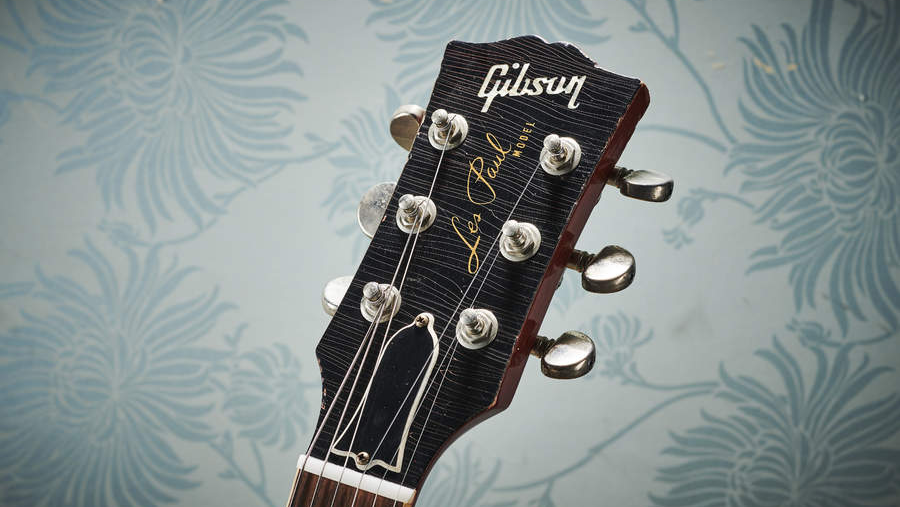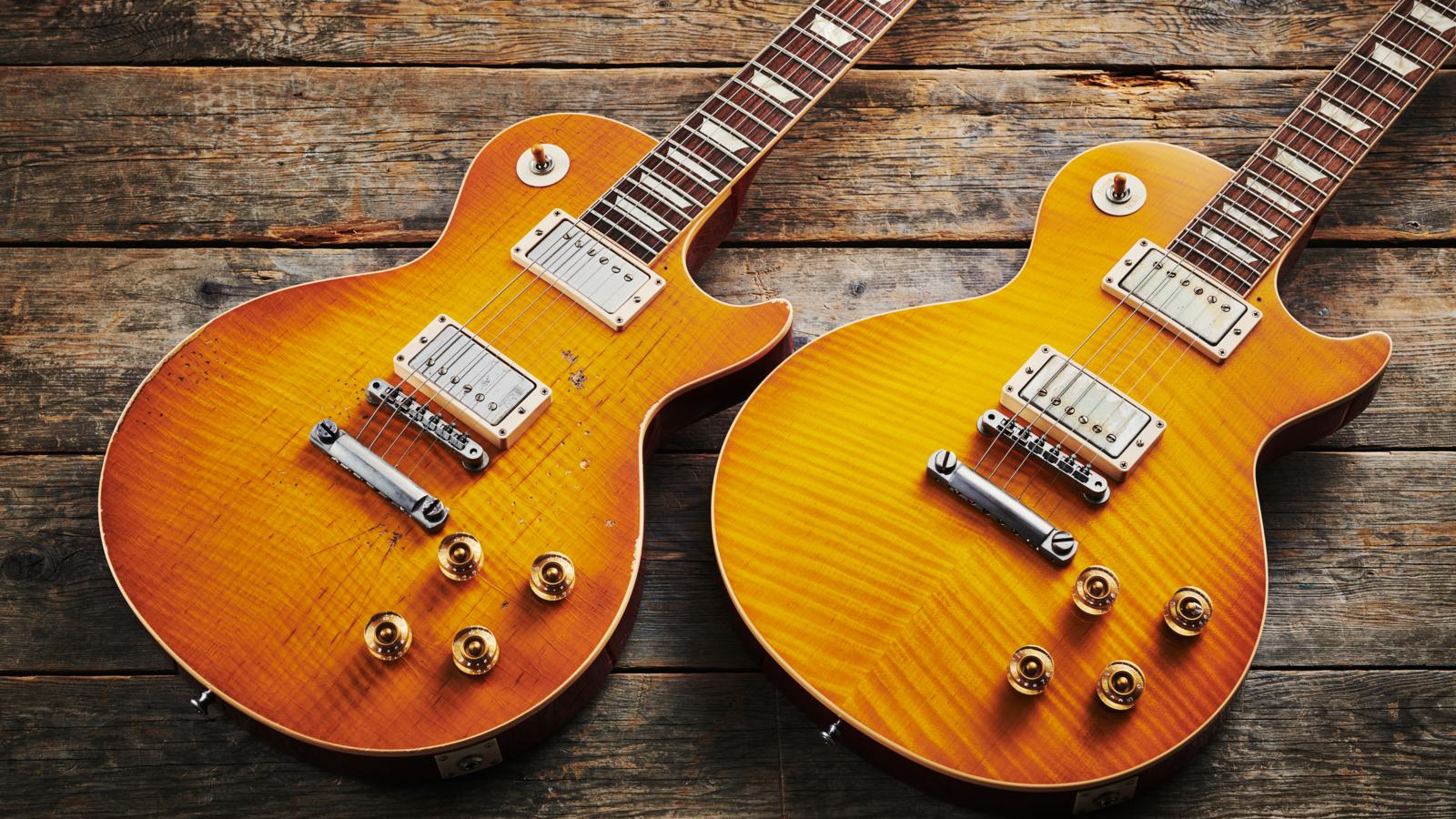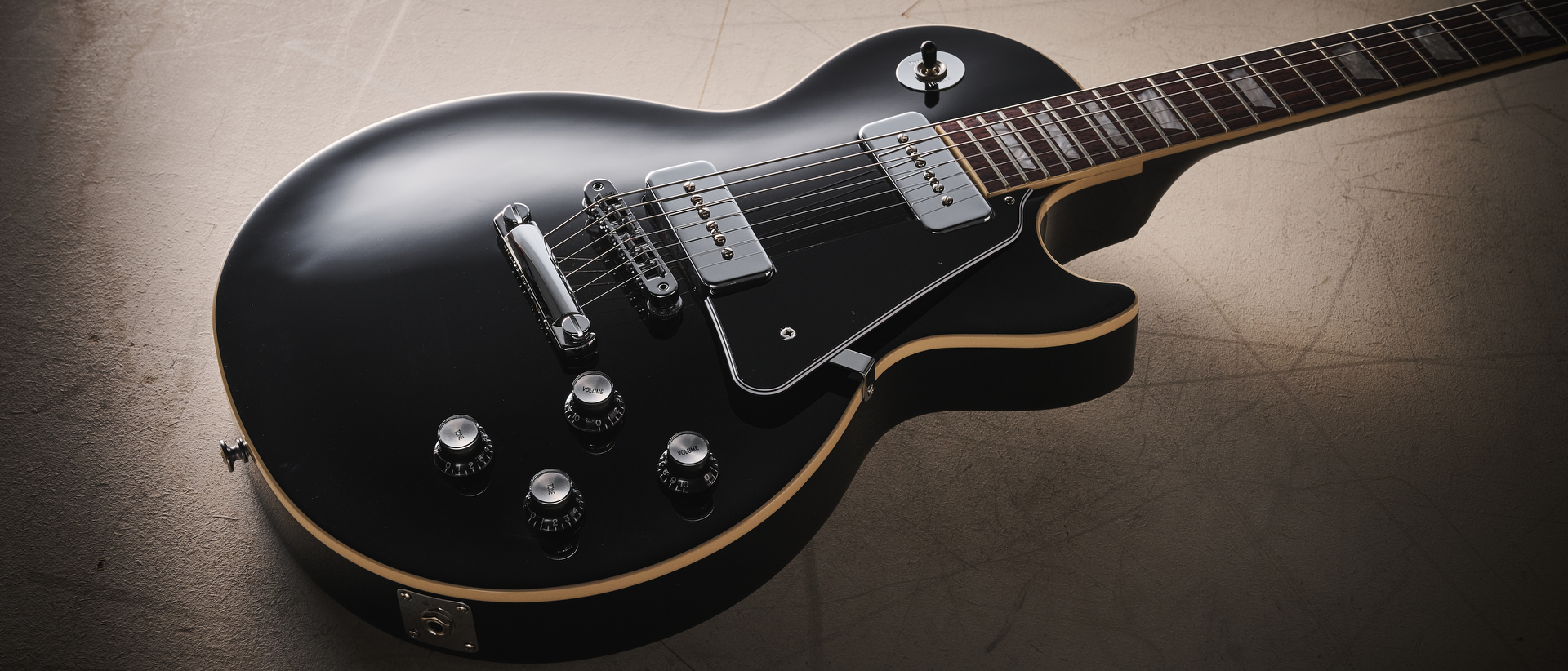Best Gibson guitars 2025: Our pick of the guitars that embody Gibson’s quality, prestige and innovation
From the Gibson SG to the gorgeous Les Paul, ES-335, Firebird and Explorer, here's the best of the best from this American institution
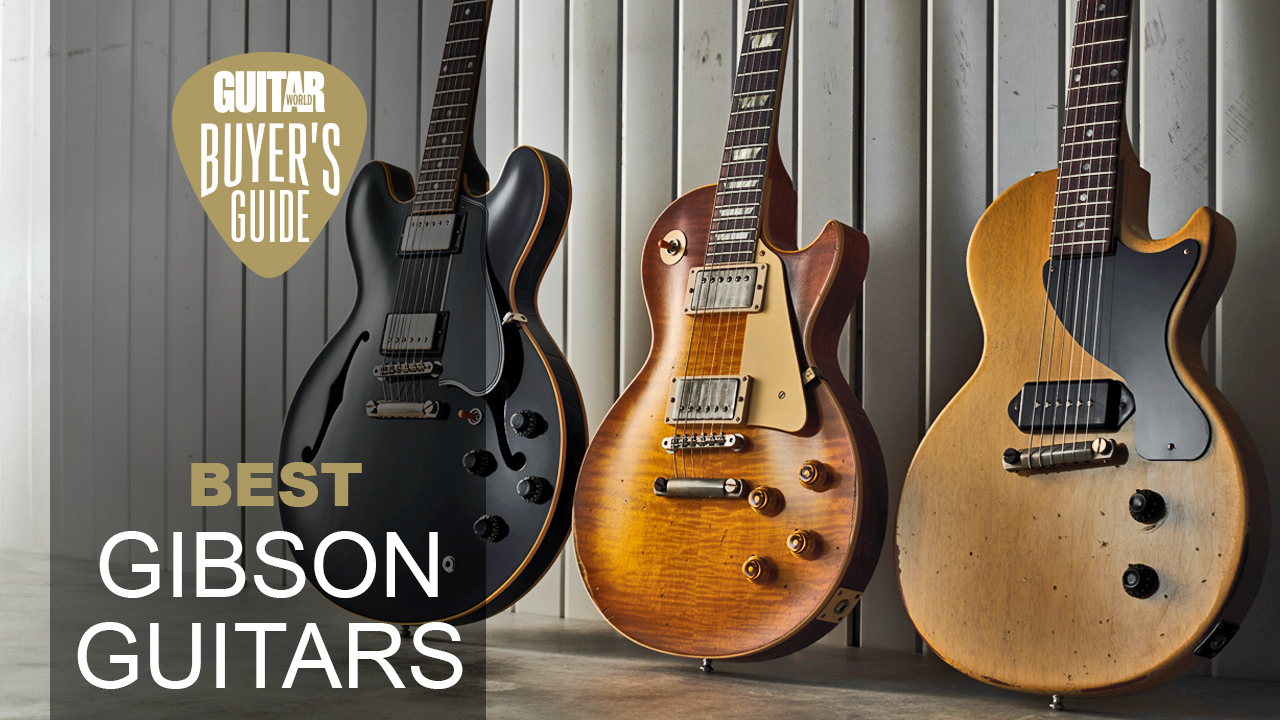
Gibson is a towering force in the guitar world. Having been responsible for some of the most iconic and legendary guitars ever produced, this all-American company has had a monumental impact on music as a whole. From the seductive beauty of the Les Paul to the gravitas of the ES-335, the best Gibson guitars have wormed their way into the hearts of countless famous players – and if you want to replicate their celebrated tones, you're going to need one of your own.
Along with their Californian rivals, Fender, many thank Gibson for ushering in the golden age of electric guitars with timeless designs that beautifully blend form with function.
So, follow us down the rabbit hole as we take a look at the best Gibson guitars available today. From singlecut stunners to hollowbody blues machines and some radically shaped axes that should probably be registered as dangerous weapons, we have a six-string to suit all tastes here.
Best Gibson guitars: Our top picks
Okay, so if we were stranded on a desert island and only allowed one guitar – and presuming we had electricity and an amplifier – we'd have to go for the Gibson SG Standard. While most think of the Les Paul as Gibson's crowning achievement, for us, it's the SG. This lightweight and comfortable guitar is always a joy to play – and better yet, it has a tone that could bring the house down.
Now, if you are on the hunt for the famed singlecut, then the Gibson Les Paul Standard '60s is a fantastic choice. This guitar is a love letter to the early era of LPs and includes a beautifully thin neck profile and a warm vintage tone.
If you are after the bellowing sound only a semi-hollow instrument can deliver, then the Gibson ES-335 is the guitar for you. This guitar is considered blues royalty, with many of the genre's kings turning to an ES guitar to achieve those soulful tones.
Best Gibson guitars: Product guide
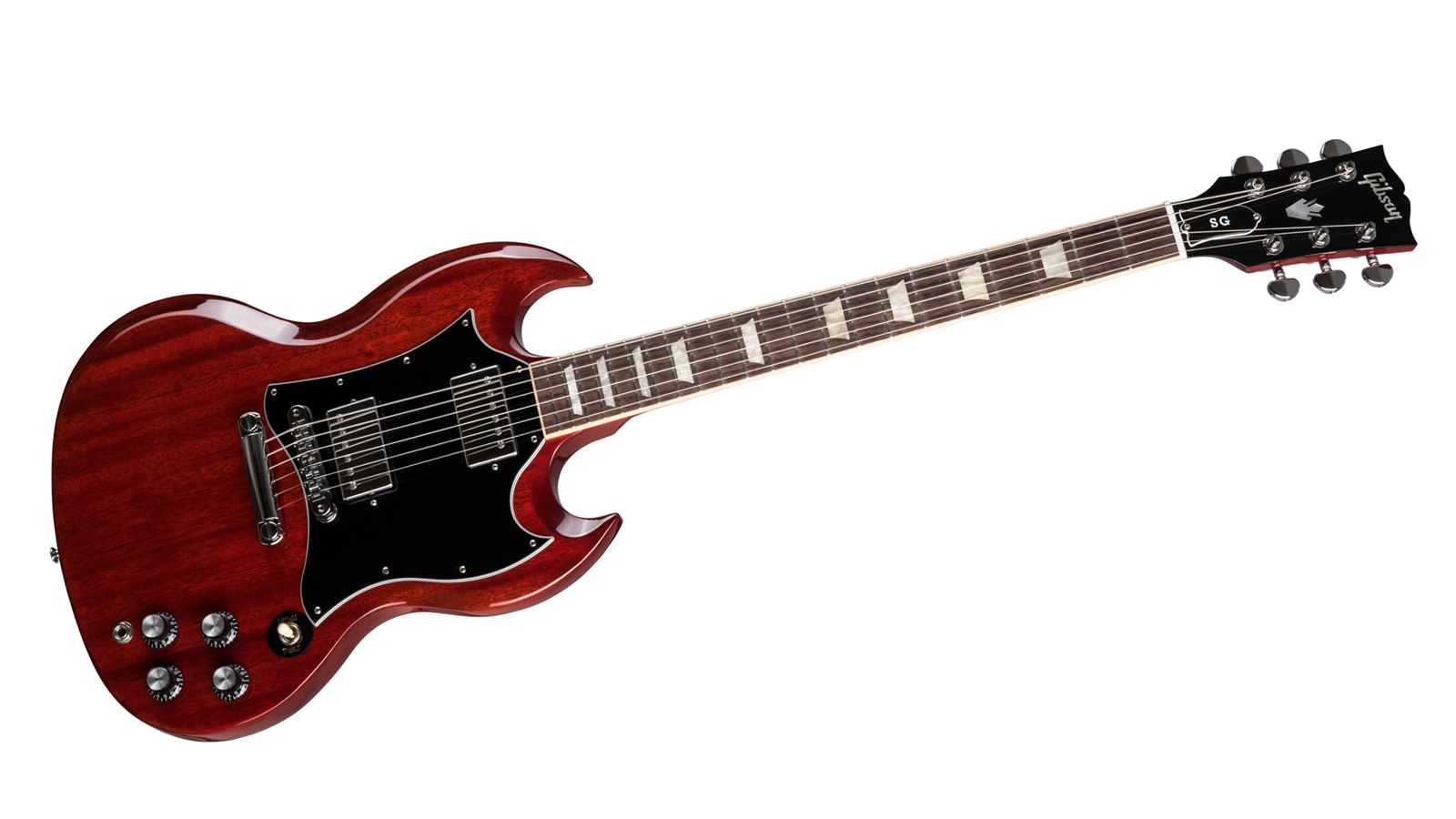
1. Gibson SG Standard
Our expert review:
Specifications
Reasons to buy
Reasons to avoid
For those about to rock, the SG is patiently waiting. This livewire of a guitar has been the instrument of choice for many rock 'n' roll greats, from Angus Young to Tony Iommi, Thom Yorke to Eric Clapton and, of course, Frank Zappa.
Now, the SG may live in the shadows of its flame-topped older brother, but for us, the SG can be a more practical and nimble option that offers a similar tone to the Les Paul while benefiting from a lightweight construction, better fret access and a more wallet-friendly price tag.
Currently, Gibson offers SG fans a plethora of "solid guitar" models, with the likes of the Vibrola clad '61 Standard, the P-90 loaded Special and the understated Junior. However, we've chosen the Gibson SG Standard from the Modern Collection for our list.
This mighty Gibson SG comes with the late '60s inspired batwing pickguard, a powerful set of 490R/490T Alnico II pickups and a super comfortable "rounded" neck profile. This guitar is everything we love about the SG in one guitar and we implore you to give it a try.
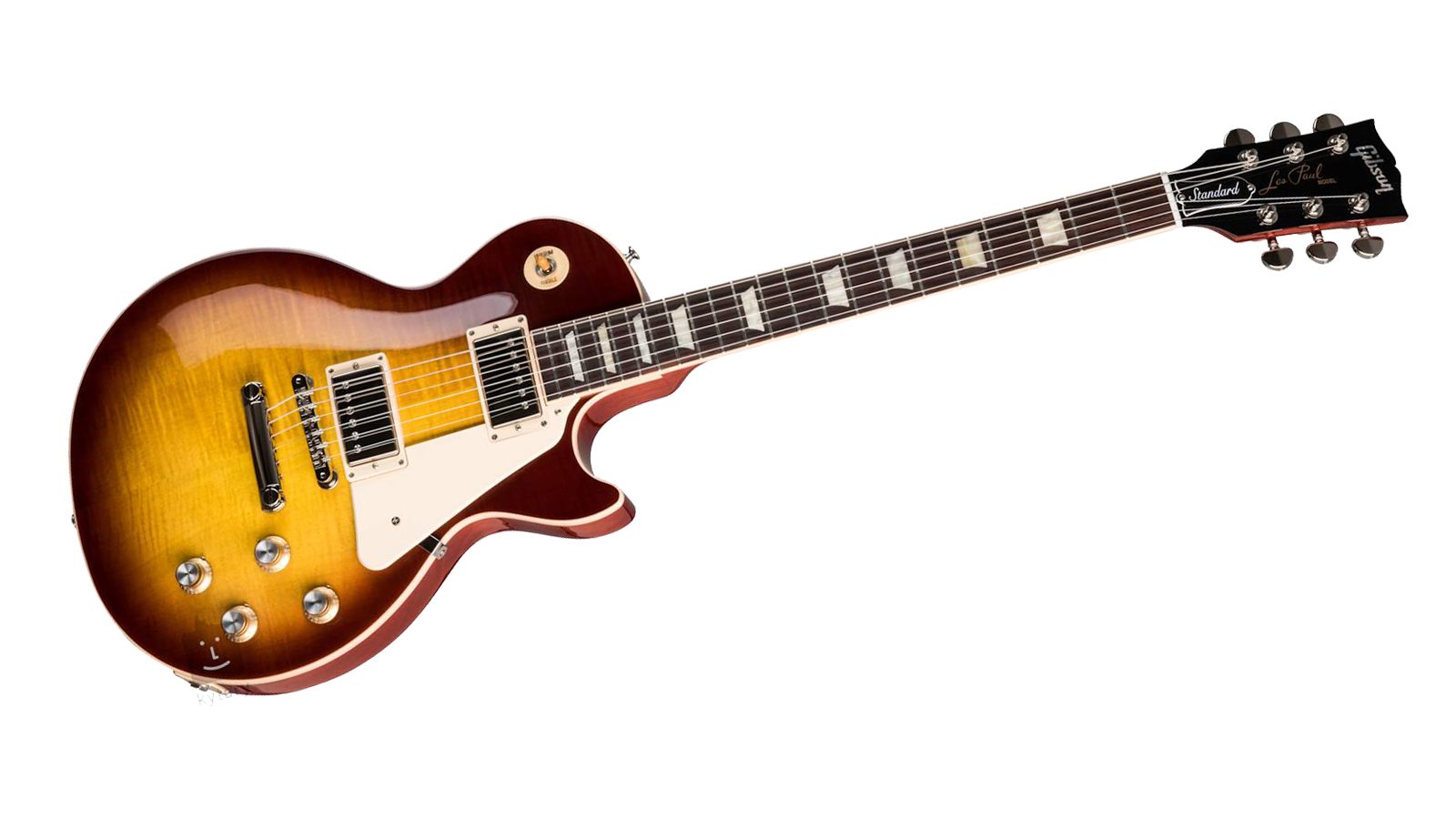
2. Gibson Les Paul Standard '60s
Our expert review:
Specifications
Reasons to buy
Reasons to avoid
The Les Paul has almost become a mythical entity at this point, with many players tracking down vintage examples like they are Indiana Jones on the search for the Ark of the Covenant. That said, you don't need to remortgage the house – or go on dangerous adventures – to get something that looks, feels and sounds like those retro singlecuts, as Gibson has the perfect guitar for you, the Les Paul Standard '60s.
With its solid mahogany body and AA-figured maple top, this Gibson Les Paul sticks pretty close to the original formula that made the earliest examples so beloved, while the 60s Burstbucker pickups deliver that vintage mojo that would start the tone chasers on their never-ending journey.
Unlike the "baseball bat" necks found on late '50s Les Pauls, this '60s version opts for the much more universally liked Slim Taper profile, which, as the name suggests, is much thinner and manageable for most players.
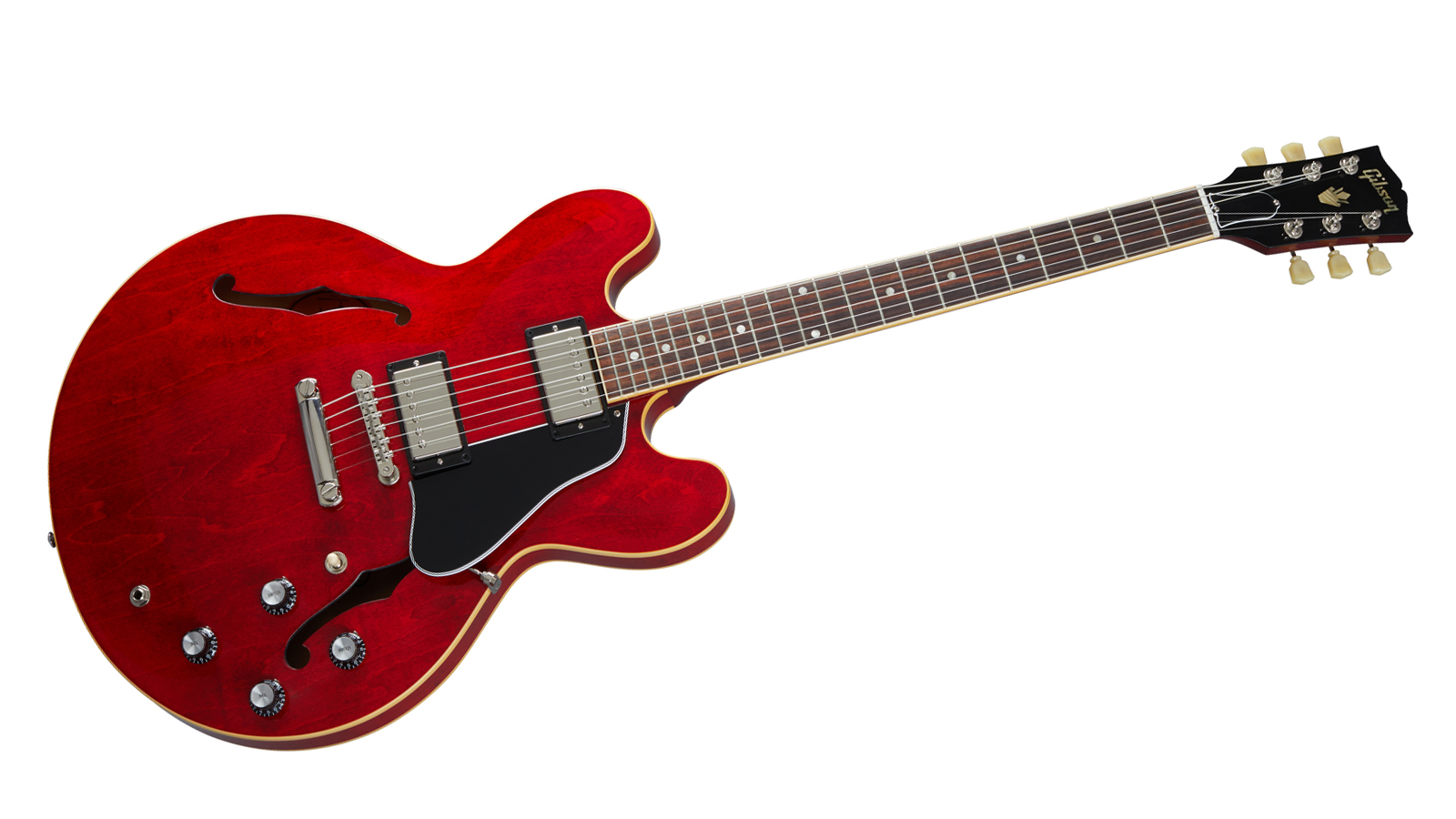
3. Gibson ES-335
Our expert review:
Specifications
Reasons to buy
Reasons to avoid
First making its appearance in the Gibson catalog in 1958 – quite the year for Gibson – the ES-335 has gone on to become the benchmark in which all other semi-hollow body guitars are measured.
Really, the ES-335 hasn't changed all that much over the years. Made in the same way it was over 60 years ago, the maple, poplar, and maple sandwiched body provides a resonance like no other, while the Calibrated T-Type humbuckers deliver the harmonically rich tone that many players crave from these retro-inspired guitars.
Now, while it's true that the ES is perfect for blues and jazz, this massive semi-hollow is actually a lot more versatile than it may first seem – in fact, we'd go as far to say that it's one of the most adaptable guitars in Gibson's extensive lineup. The elegant ES-335 can be seen fronting stadium rock bands, laying down the foundations for pop punk, playing away the blues in a smoky club and so much more.
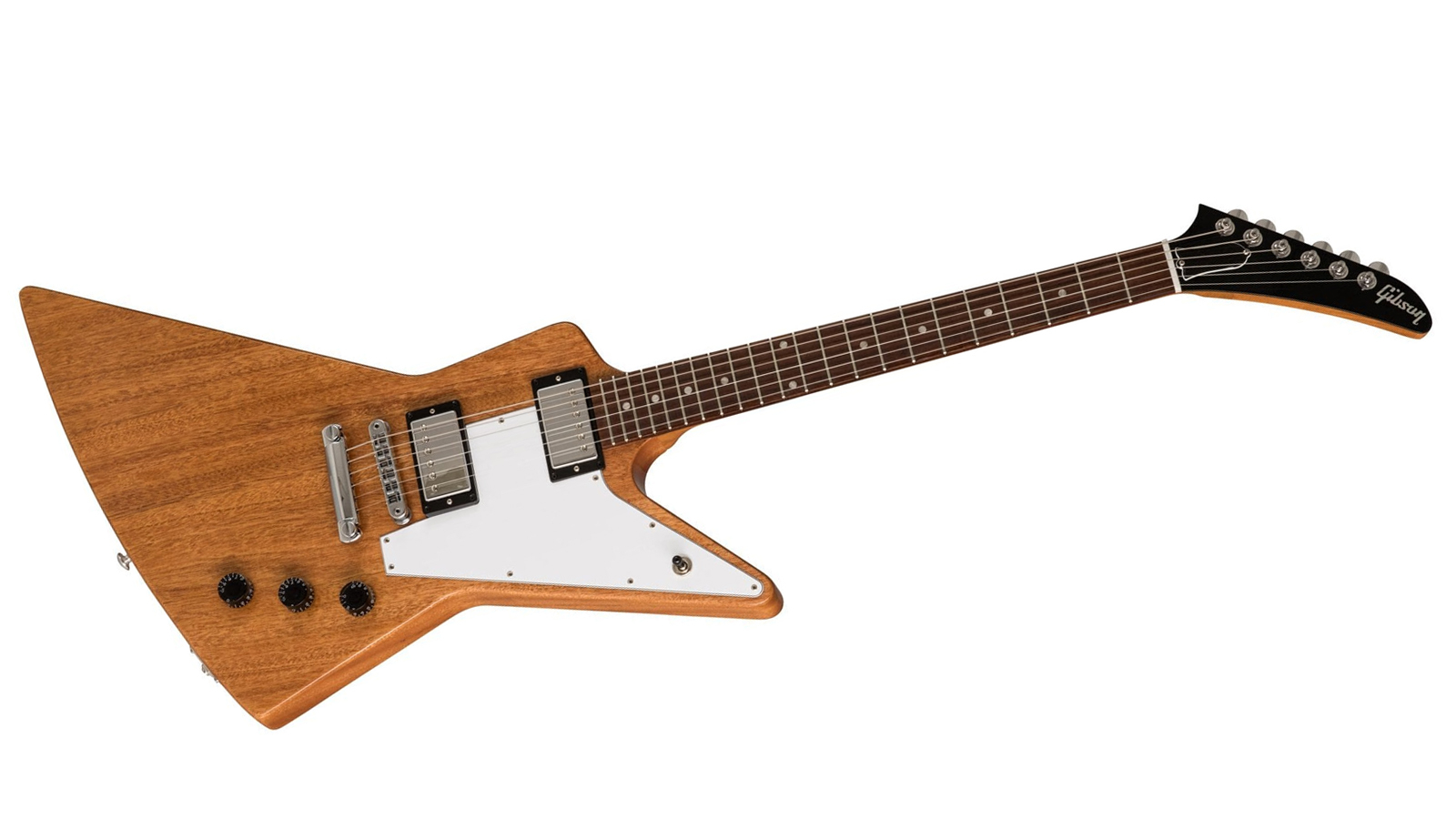
4. Gibson Explorer
Our expert review:
Specifications
Reasons to buy
Reasons to avoid
Just imagine seeing this radical guitar for the first time in 1958. Launched in the midst of the great space race and despite America's obsession with science fiction at the time, the world wasn't quite ready for this futuristic six-string – but to paraphrase Marty McFly, their kids were gonna love it.
While the original guitar didn't resonate with players in the late '50s and early '60s, the Explorer would go on to find an audience in the '70s when more flamboyant guitarists started to emerge – resulting in a boom of Explorer copies flooding the market.
Nowadays, the Explorer has firmly established itself as one of the great electric guitar designs, with famous fans such as James Hetfield, The Edge, Dave Grohl and Allen Collins using one to devastating effect on countless classic records.
While the originals were made from the exotic Korina, this modern version opts for an all-mahogany set-neck construction, rosewood fingerboard, and SlimTaper neck and is more akin to the later Explorers Gibson would release.
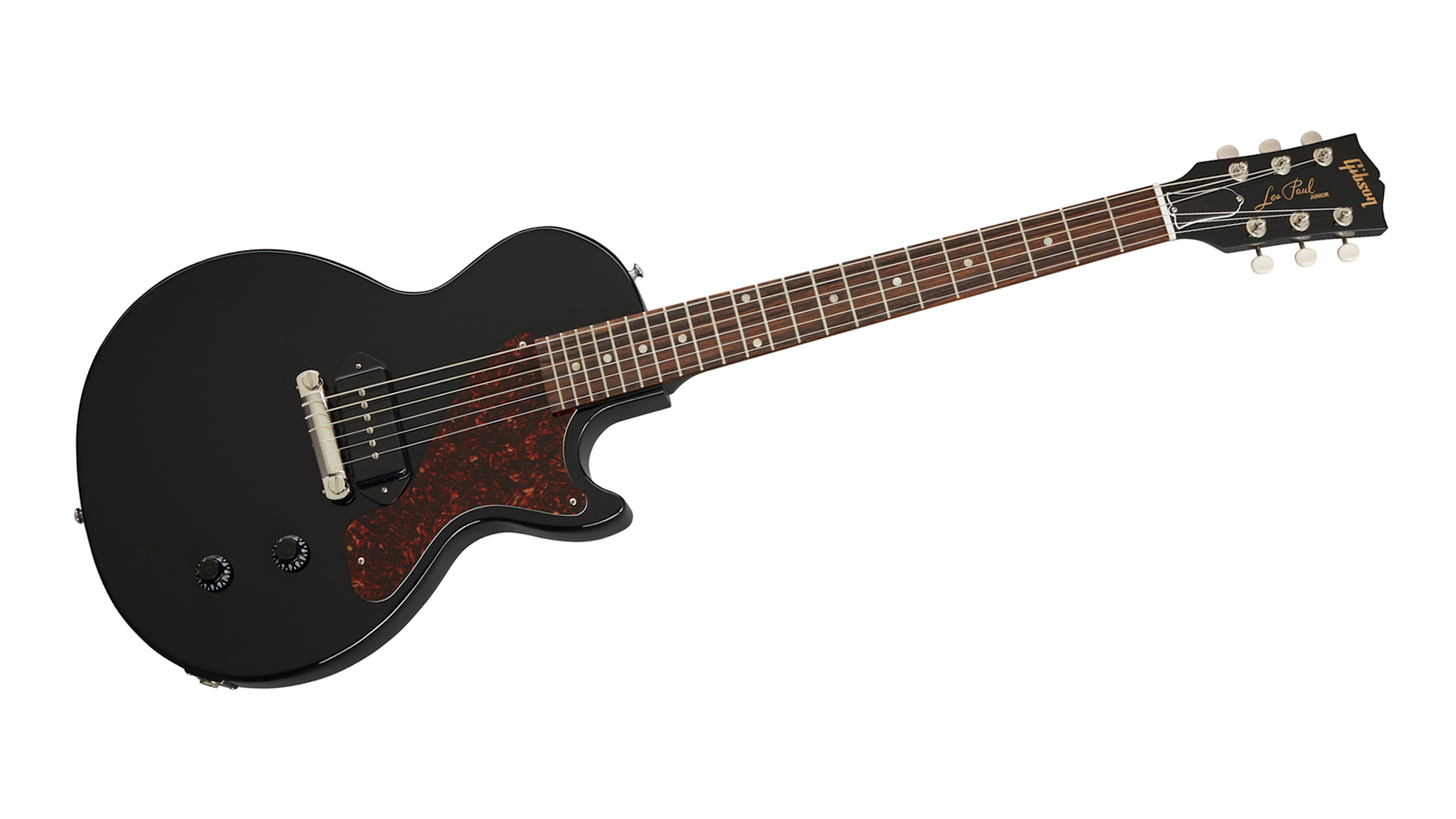
5. Gibson Les Paul Junior
Our expert review:
Specifications
Reasons to buy
Reasons to avoid
Adopted by the punks with open arms, this once-student model has gone on to become one of Gibson's most revered instruments. Beloved for its no-nonsense approach to tone, simplified layout and dynamic pickup, this is easily the best Gibson guitar for those who are seeking a straightforward axe that thoroughly rocks.
Originally introduced as a budget model in '54, this stripped-back LP has garnered quite the following, with the likes of Keith Richards, Billie Joe Armstrong, Mick Jones and Leslie West using one to execute their signature tones.
The modern version does a great job at replicating the vibe and feel of the original with its slab mahogany body, single dogear P-90 pickup, fat 50's-style neck profile and wraparound bridge. So, if you're looking for a simple, humble guitar that can deliver a cataclysmic tone on a dime, then it's worth seeking out the Gibson Les Paul Junior.

6. Gibson '70s Flying V
Our expert review:
Specifications
Reasons to buy
Reasons to avoid
Unleashed onto the unexpecting guitar playing community at the same time as the Explorer – and the extremely obscure Moderne – the Flying V followed a similar trajectory as its angular brethren. While not popular at first, the Flying V would find a new home at the heavier, more experimental end of the music spectrum – and well, the rest is history.
The Flying V featured here recreates the iconic variation from the '70s, with its bound rosewood fingerboard, Slim Taper neck and uncovered 70s Tribute humbuckers, all of which are finished off with a dapper white paint job.
Much like the SG, the Flying V has a robust mid-range bark that makes it ideal for rockers looking to make an impact, while the neck pickup delivers a creamy tone that is sure to make your lead lines sing.
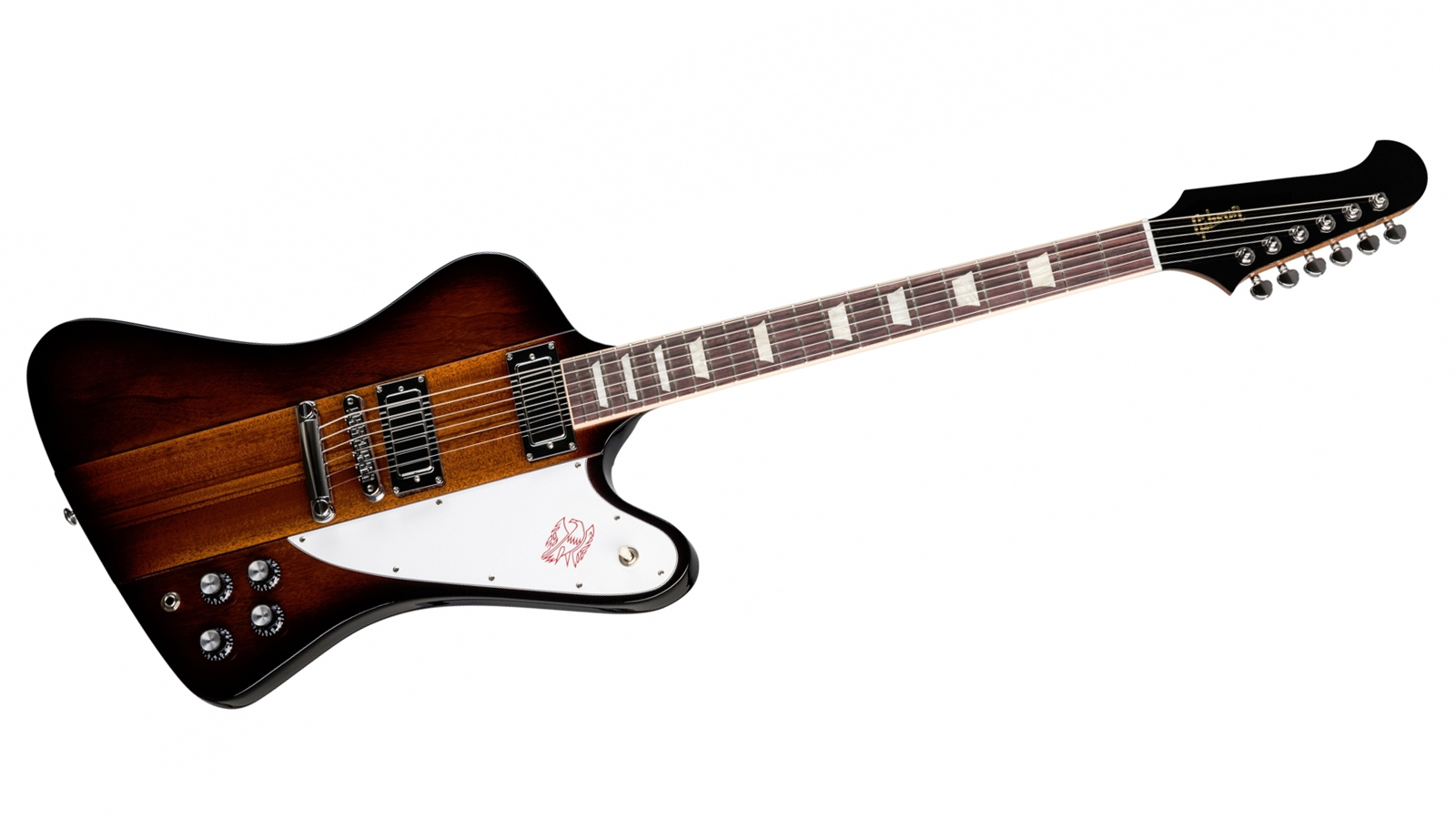
7. Gibson Firebird
Our expert review:
Specifications
Reasons to buy
Reasons to avoid
Conceived by Ray Dietrich, a car designer most known for his iconic work with Packard, Lincoln, and the New York cabs for the Checker company, the Firebird was Gibson's first forte into neck-through construction.
Gibson needed a guitar that would pull them out of the trouble caused by Fender's new-fangled offset guitars, and thus the Firebird was born – the one guitar that was going to help Gibson rise from the ashes. Now, while it may not be a household name such as the Les Paul or SG, the Firebird has gone on to garner somewhat of a cult following since its debut in 1963.
Featuring a unique 9-ply mahogany and walnut neck through body, the Firebird stands out in the Gibson lineup. The distinctive pickups continue the theme of oddities for this offset guitar, providing a bright, shimmery tone that is definitely more articulate when compared to the LP, with a grunt that's not too dissimilar to a P-90.
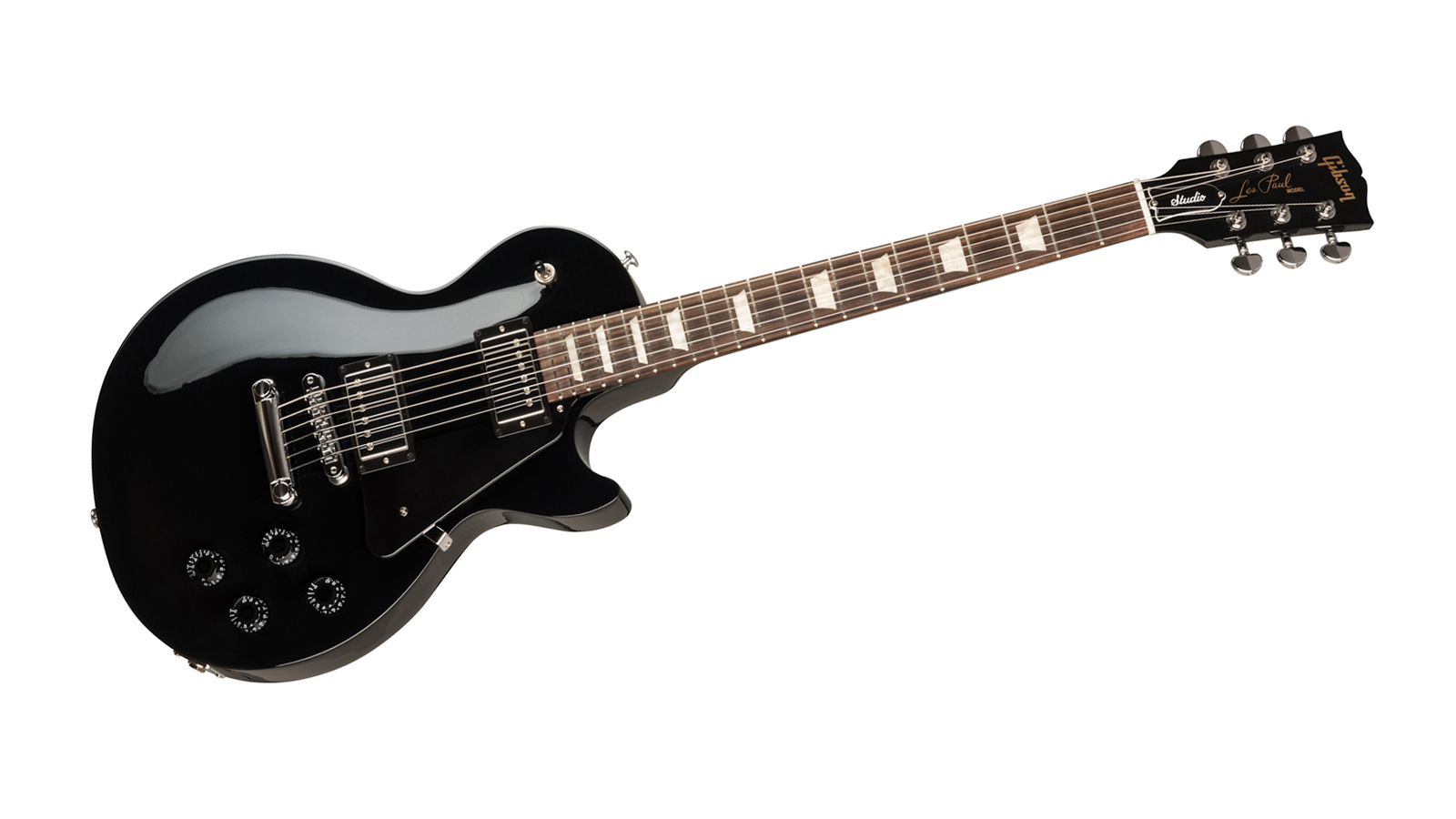
8. Gibson Les Paul Studio
Our expert review:
Specifications
Reasons to buy
Reasons to avoid
Okay, so we all love the tone of the Les Paul, but not everyone needs the high-end cosmetic embellishments such as binding, flame maple and mother-of-pearl inlays – well, that's where the Gibson Les Paul Studio comes in.
The Studio has been a staple of the Gibson family since 1983, and has been a firm favorite of Jade Puget of AFI, Frank Iero of My Chemical Romance and Chris Burney of Bowling for Soup – who can all be seen putting this stripped-back LP through its paces on stage and well, in the studio.
The name originally comes from the idea that it doesn't matter what your guitar looks like in the recording studio, it's what it sounds like that counts. That said, the guitar has evolved over time and the current version now includes two push-pull pots, which offer players additional coil-tapping options, meaning they have extra sounds on tap while they are laying down tracks.
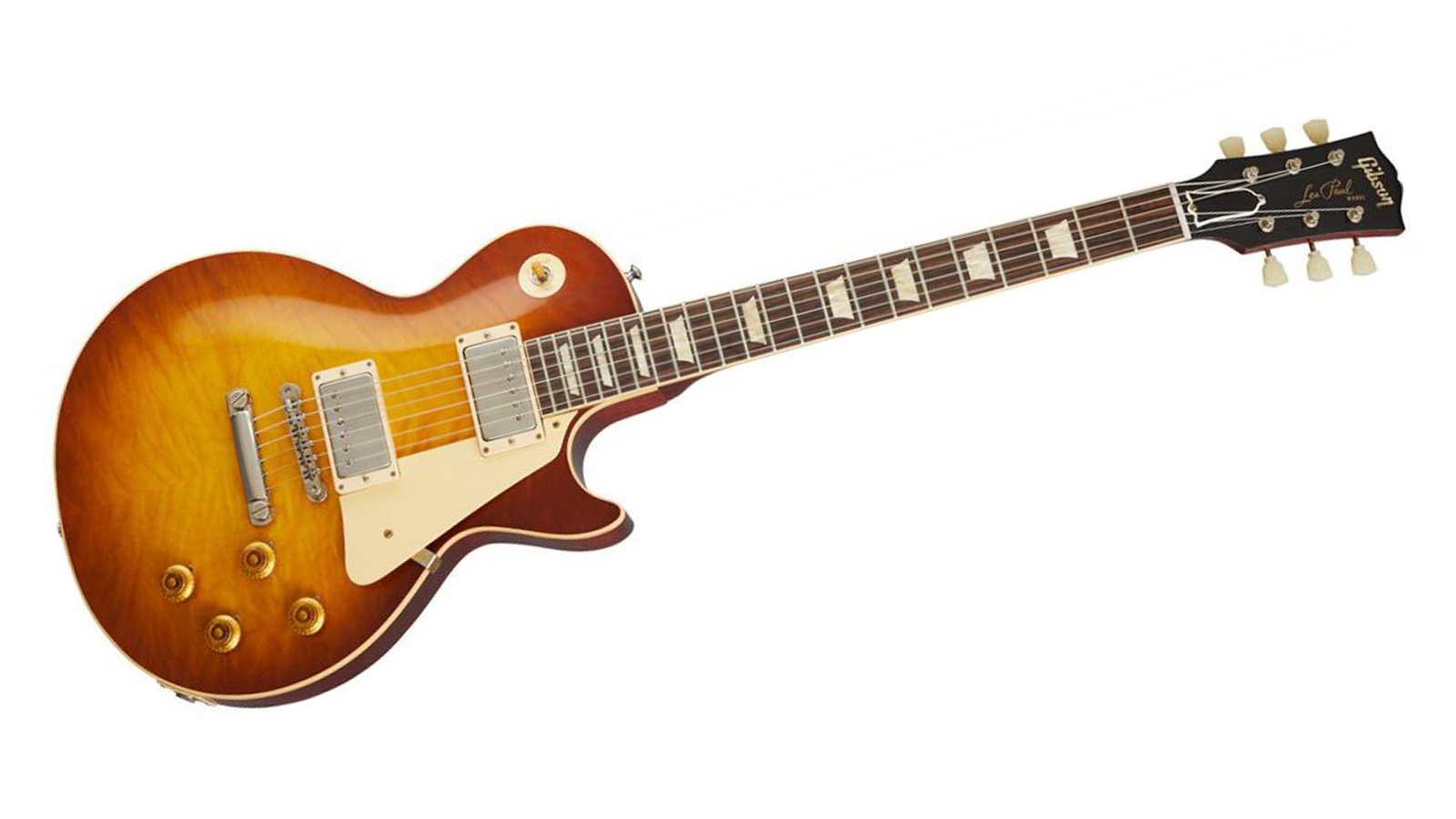
9. Gibson 1959 Les Paul Standard Reissue
Our expert review:
Specifications
Reasons to buy
Reasons to avoid
Thought of by many as the "holy grail" of electric guitar, the '59 Les Paul is one of the most coveted instruments of all time, with original examples going for astronomical sums. Now, while most of us won't ever see an authentic '59 Les Paul, let alone be able to afford one, the Gibson 1959 Les Paul Standard Reissue is the next best thing.
Gibson has paid careful attention to every detail when recreating this mythical instrument in all its vintage glory, from using lasers to scan the original dimensions to the use of period-correct hide glue – this guitar really is as close as you can get to the real deal.
So, if you are looking to own a slice of guitar history but don't have a special money tree in the backyard, you'll want to check out the Gibson 1959 Les Paul Standard Reissue – although, we do warn you, once you try one, you'll find it very difficult to put it down.
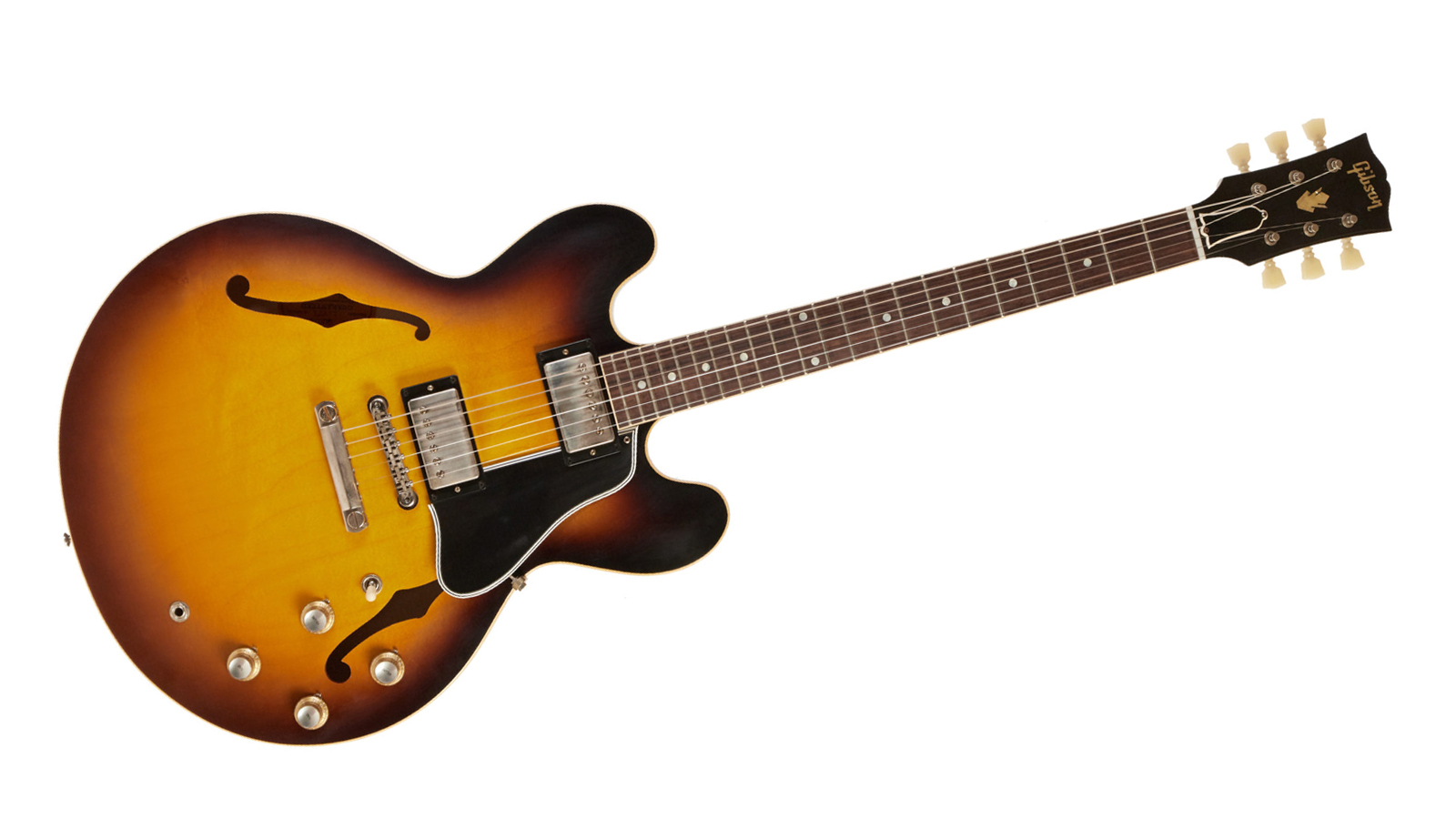
10. Gibson Custom Shop 1961 ES-335 Reissue
Our expert review:
Specifications
Reasons to buy
Reasons to avoid
At this point, Gibson's expertly made reissues are becoming scarily close to the originals. Now, this shouldn't come as much of a surprise, as the Custom Shop has made it their lives work to study, scan and replicate those iconic instruments of the golden age of guitar.
This latest version of the 1961 ES-335 Reissue has to be not only one of the best Gibson guitars available right now but one of the best guitars, period. The vintage-correct Slim Taper 60s C neck offers effortless playability, while the Custombucker Alnico III pickups perfectly transport you back to a smokey blues club in the early sixties.
Okay, we know that this guitar doesn't exactly come cheap, but really when compared to the price of authentic vintage guitars, this is a drop in the ocean. So, if you are looking for a true retro experience from a brand-new guitar, the Gibson Custom Shop 1961 ES-335 Reissue is the instrument for you.
Best Gibson guitars: Buying advice
The origin of Gibson guitars
You can trust Guitar World
Gibson's history dates so far back that they've become a part of the DNA of America, and without their long-reaching legacy, it's hard to imagine just how different the world of popular music would be – it would certainly be quieter!
Started by Orville Gibson in 1894, the now world-dominating guitar giant was actually a part-time passion project that had humble beginnings in a small workshop in Kalamazoo, Michigan. While Orville started with crafting mandolins, he would soon graduate to guitars. Now, since he didn't have the formal training of his peers, Gibson would experiment with new techniques. This resulted in him pioneering tops that were carved and not bent, like the guitars and mandolins of the day.
Over the coming years Gibson's guitars would go on to become very popular with local musicians and the brand would start to make a name for itself as the place to go for finely crafted instruments.
In the 1920s, Gibson started innovating again, laying down the foundations that their modern legacy would be built. While Orville Gibson's contributions can't be denied, Gibson owes a lot to an employee named Tedd McHugh. We wouldn't have the adjustable truss rod or the height-adjustable bridge system without McHugh. Two things that all modern guitars rely on. Around the same time, Gibson would launch their first flat-top, the L-5, kickstarting the company's love affair with the modern acoustic guitar.
Ted is credited with a slew of Gibson models and innovations, having a hand in developing everything from the P-90 pickup to the ES-335, SG, Explorer, Flying V and Firebird.
A few years later, in 1935, Gibson would start to experiment with electric instruments – while it was lap steel and not a traditional electric guitar as we know it, this would pave the way for all the other electric guitar icons Gibson is most known for. The first ES – Electric Spanish – model would be launched in 1936. This ES-150 model was a moderate success, but despite this, Gibson would focus primarily on their highly lucrative acoustic guitars for the coming years.
Skipping forward to the 1950s, Gibson would go through a rather large change. A Kentucky man named Ted McCarty took over the presidency of Gibson and well, music history was made. Ted is credited with a slew of Gibson models and innovations, having a hand in developing everything from the P-90 pickup to the ES-335, SG, Explorer, Flying V and Firebird.
A few short years later, Gibson would make a pairing that's stood the test of time and would ultimately go on to define the brand in the eyes of many modern guitarists. Teaming up with inventor, luthier and famed jazz guitarist Lester William Polsfuss, the two would go on to make one of the most iconic instruments of all time, the Gibson Les Paul. While it wasn't exactly what we think of as a Les Paul today, all the hallmarks of this now legendary guitar were there – and with a few iterations over the years, the hulking powerhouse we know as the modern LP would eventually come into being.
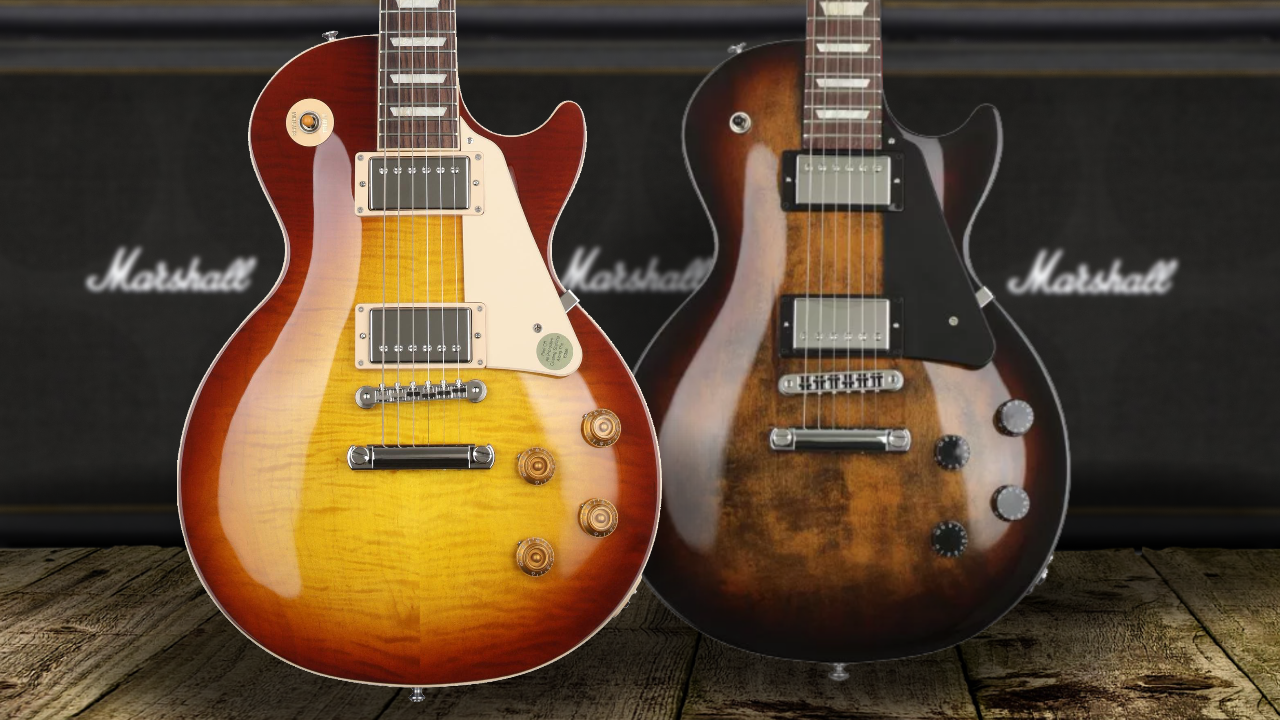
Les Paul Standard vs Les Paul Studio: We unpick the history, players and tones of the Standard and Studio
Over the next few decades, Gibson would continue to innovate, launching new models – and discontinuing some – while cementing themselves as one of the best guitar brands of their generation.
At the end of the swinging sixties, Gibson would be sold off to South American brewing conglomerate ECL and, by 1974, would be part of Norlin Musical Instruments. It's fair to say this was a rough time to be a Gibson fan. Corporate mismanagement of the brand, poor quality products, and a lack of direction led to some players losing faith in the once-beloved guitar manufacturer. It would be Norlin who made the decision to move Gibson's production from their homestead of Kalamazoo to Nashville, Tennessee – where they remain to this day.
In 1986 Gibson would find themselves in trouble, but thankfully, they would be saved by a trio of new owners, Henry Juszkiewicz, David Berryman and Gary Zebrowski. This new era of Gibson introduced some of the brand's staples, such as the Les Paul Studio. Henry J and his team were also responsible for opening a Memphis facility that was used for semi-hollow and custom shop instruments, as well as a Bozeman factory that was dedicated to acoustic guitars.
And now brings us to the modern day. In 2018, the guitar masters would file for Chapter 11 bankruptcy protection and would shake things up by instating a new management team led by ex-Levis' head honcho JC Curleigh who would take on the role of CEO and Cesar Gueikian, who would become Gibson's Brand President.
Gibson's range explained
Gibson's rather large offering can be broken down into just a few key categories – Original, Modern, Exclusives and Custom Shop.
Original
Let's start at the beginning with the Original Collection. This is where you'll find Gibson's period-inspired offerings from their USA factory. While these guitars aren't strict recreations of retro guitars, they are heavily influenced by the instruments of Gibson's golden age. Almost all of the guitar giant's models are represented here, with the likes of the Les Paul, SG, ES, Explorer and Flying V all available.
Modern
As the name suggests, the Modern Collection is where you'll find Gibson's more technologically advanced guitars. These models tend to have higher output pickups, modern weight relief and other contemporary features such as coil splitting.
Exclusives
The Exclusive Collection is something a little newer for Gibson. This is a range that is – you guessed it – exclusive to the Gibson site. These models can feature anything from different pickup options to unique finishes.
Custom Shop
The Custom Shop Collection is where you'll discover Gibson's high-end models. These guitars are the crème de la crème of the USA guitar maker's catalog and includes everything from near-perfect clones of vintage guitars to hand-crafted artist models and experimental new projects.
Now, while the Custom Shop offering is rather large, they all share one thing in common; they are built to the absolute highest standards with stunning attention to detail.
Related buyer's guides
- Epiphone vs Gibson: what's the difference?
- Here are the best Epiphone Les Pauls available right now
- Play harder with the best rock guitars
- Go down low with the best baritone guitars
- Got the blues? Check out the best blues guitars
- From Fender to Gibson, Taylor to Martin, here are the best guitar brands
- On a budget? Here's the best Epiphone guitars
All the latest guitar news, interviews, lessons, reviews, deals and more, direct to your inbox!
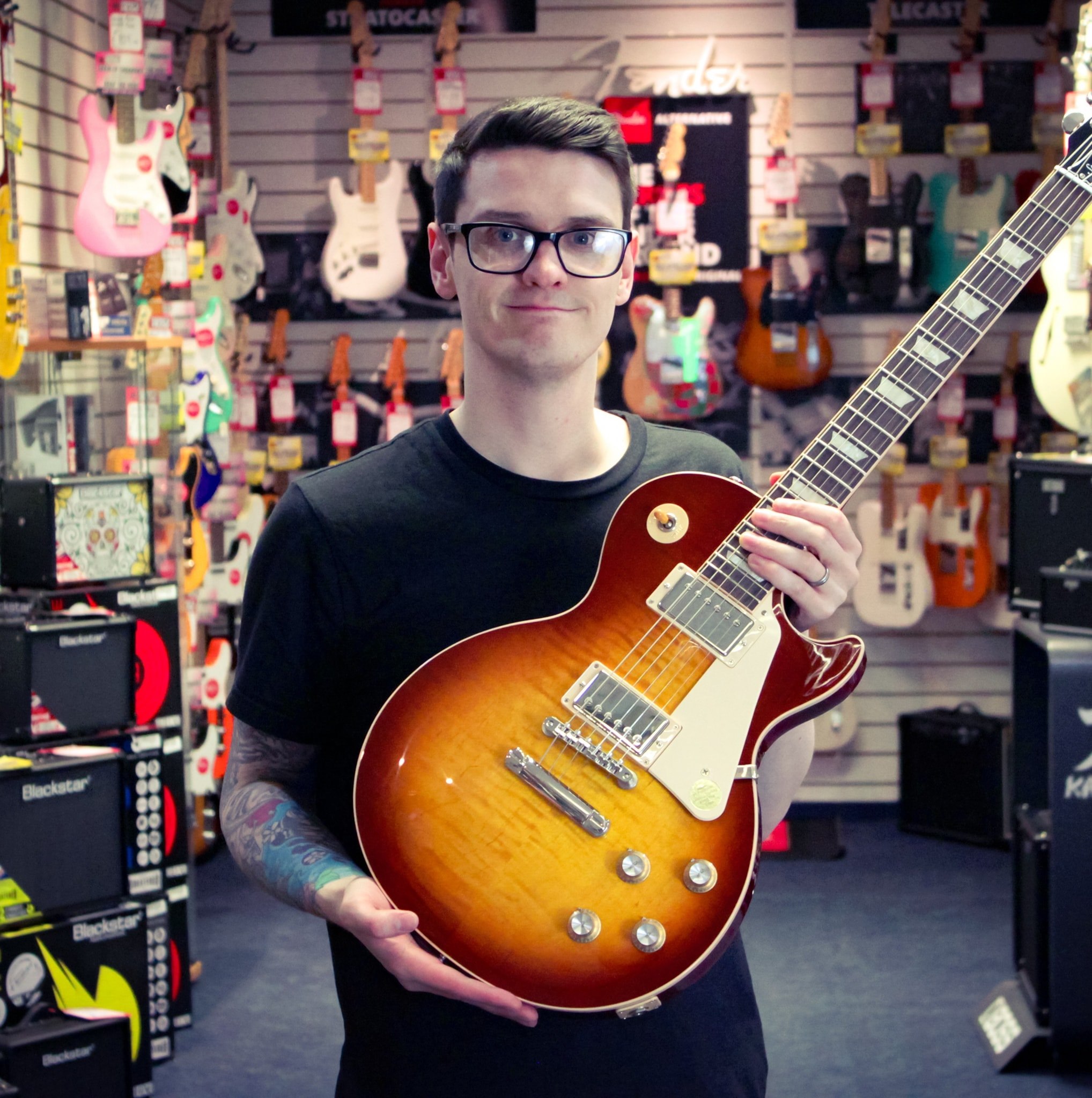
Daryl is a Senior Deals Writer at Guitar World, where he creates and maintains our 200+ buyer's guides, finds the best deals on guitar products, and tests the latest gear. His reviews have been featured in prominent publications like Total Guitar, Guitarist, Future Music magazine, and MusicRadar.com.
During his career, he has been lucky enough to talk to many of his musical heroes, having interviewed Slash and members of Sum 41, Foo Fighters, The Offspring, Thrice, and more. In a past life, Daryl worked in music retail. For a little under a decade, he advised everyone from absolute beginners to seasoned pros on the right gear for their needs.
Daryl is a fully qualified sound engineer, holding a first-class Bachelor's degree in Creative Sound Production from the University of Abertay.
